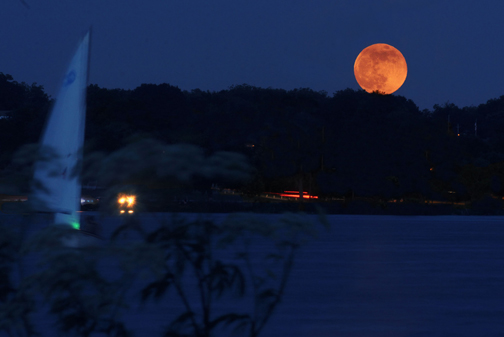 I find the recent cooler days and periods of rain a relief. My garden does, as well, but more to the point, the cooler weather means things smell better. The effect is particularly noticeable along the dog-park section of Dallas Road and at Thetis Lake’s unsanctioned dog beach.
I find the recent cooler days and periods of rain a relief. My garden does, as well, but more to the point, the cooler weather means things smell better. The effect is particularly noticeable along the dog-park section of Dallas Road and at Thetis Lake’s unsanctioned dog beach.
I realize dogs (and their owners) need a place to be dogs (and owners) and to socialize with their kind, but after 30-plus days of blue skies and warm temperatures, the resulting accumulations of ammonia, methane and, well, toilet can make the driest eyes water and the strongest stomach clench.
Rain and cooler temperatures help dampen the fumes of the dog days of summer.
But let’s get something straight. The phrase “dog days” does not refer to Fido or his doo-doo. Nor does it describe Rover’s snooze-all-day-in-the-shade summer behaviour.
The ancient Greeks and Romans believed Sirius — the Dog Star, not the radio satellite — influenced summer weather.
When I mentioned this to Nature Boy, he looked at me blankly, then burst out: “That’s impossible. Sirius (the star) is a winter star. At this time of year, it’s barely over the horizon.”
Yup. Sirius is the largest and brightest star in Canis Major, and this, the Big Dog constellation, chases the constellation Orion the-hunter-with-the-studded-belt across the winter sky.
At this time of year, the sun’s light hides Sirius, except just before dawn. At that time of day, at this time of year, if you peer toward the east, near where the sun will first peep over the Earth’s curve, a bright, party-coloured star glimmers just above the horizon.
That’s Sirius, the Dog Star, the bright, glowing heart of the Big Dog constellation.
The observant ancients noticed the hottest days of the year coincided with the star’s appearance in the same part of the sky as the sun, just before dawn.
They concluded that the celestial canine must exert some constructive force on our star. The word “Sirius” comes from the Greek for “scorching” or “glowing.”
Because it lies so close to the horizon at this time of year, you see it through a shallower angle of atmosphere than the stars above. The water and dust and everything else in the atmosphere act like a gelatin filter on a stage light, altering Sirius’s colour and causing it to twinkle. It shimmers and glints, and can glow green, red, yellow or white.
This changeability led the ancients to believe Sirius not only made the sun go into heat, but caused people down here on Earth to go off their rockers.
Anybody working in an office without air conditioning or cooling breezes this July knows that heat can make concentration difficult and patience in shorter supply.
Many hot-climate cultures accommodate this effect of heat on productivity by institutionalizing longer lunch breaks that push the end of the work day into cooler, more productive hours of the evening.
Noel Coward captured the sentiment with “mad dogs and Englishmen go out in the midday sun,” and acknowledged that the English, and most northern cultures, “detest-a the siesta.”
Although Sirius appears to be a single point of light to us, it’s actually two stars dancing in tight orbit around each other. We see Sirius A, the bigger, brighter star. Its companion is a much dimmer white dwarf star, nicknamed the Pup.
Preceding Canis Major in pursuit of Orion-the-hunter across the sky is another marker named for our loyal, four-legged friends: Canis Minor, or the Small Dog constellation.
The dog days of summer might refer to celestial phenomena, not our pets, but long-ago European sky-watchers commemorated the likes of Fido and Rover in the heavens.
Long before orbiting cremation satellites and space burials became possible or even affordable, as was announced this week by new high-tech memorial startup Elysium Space, the ancients affected a general glorification for all canine companions in our lives — whatever the season.
Or the temperature.
Read this editorial in the Victoria Times Colonist….







